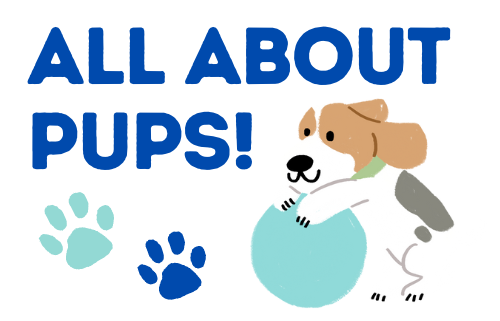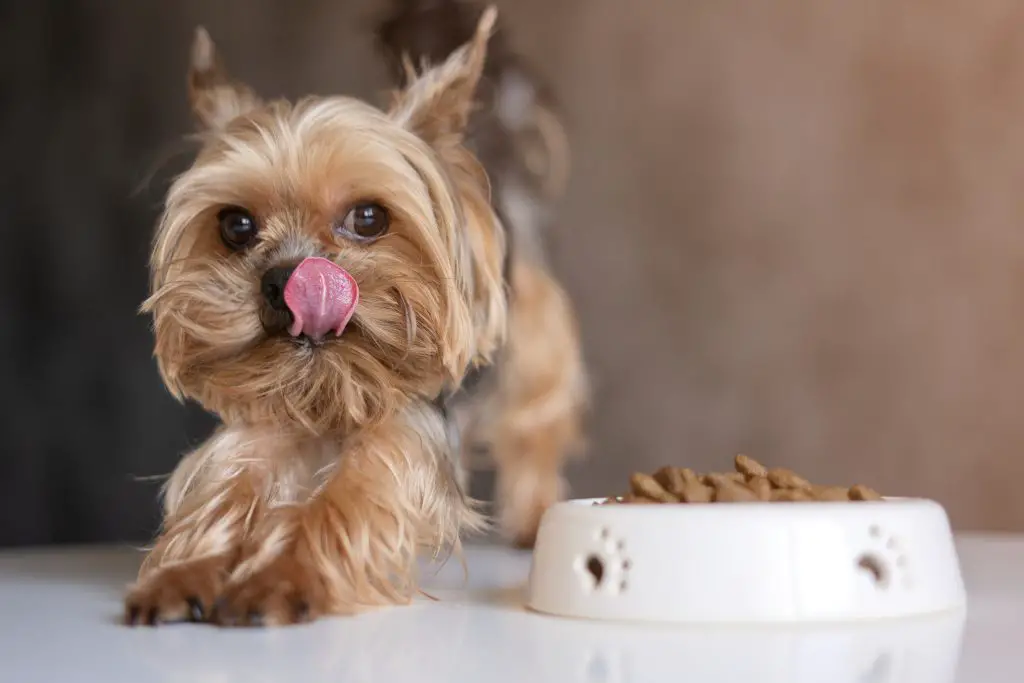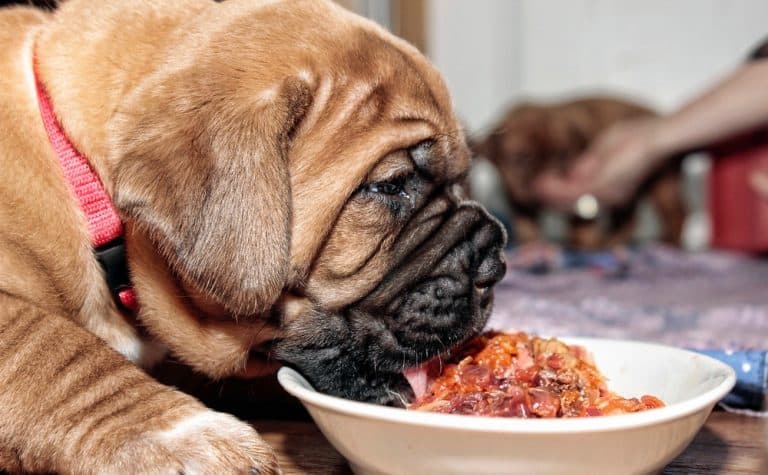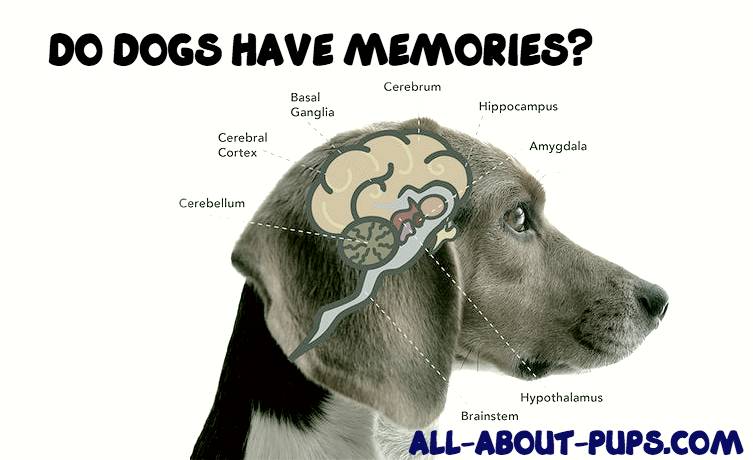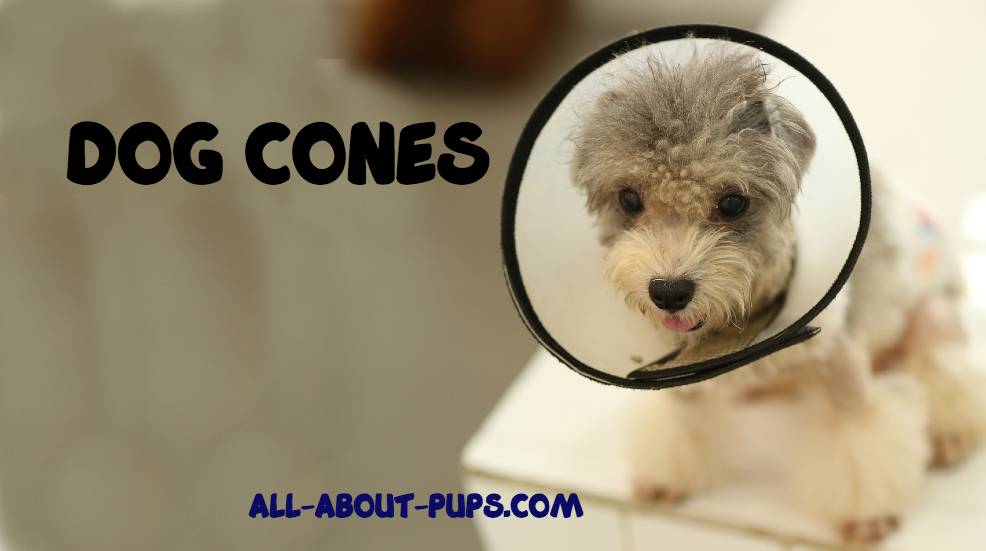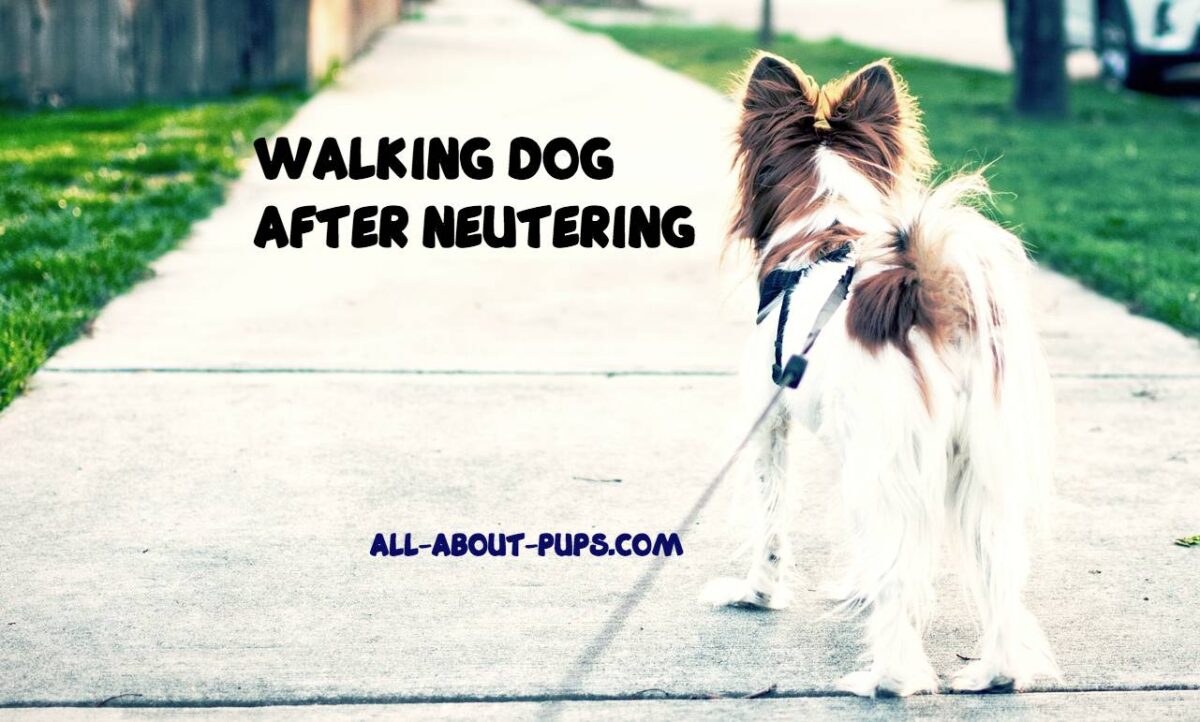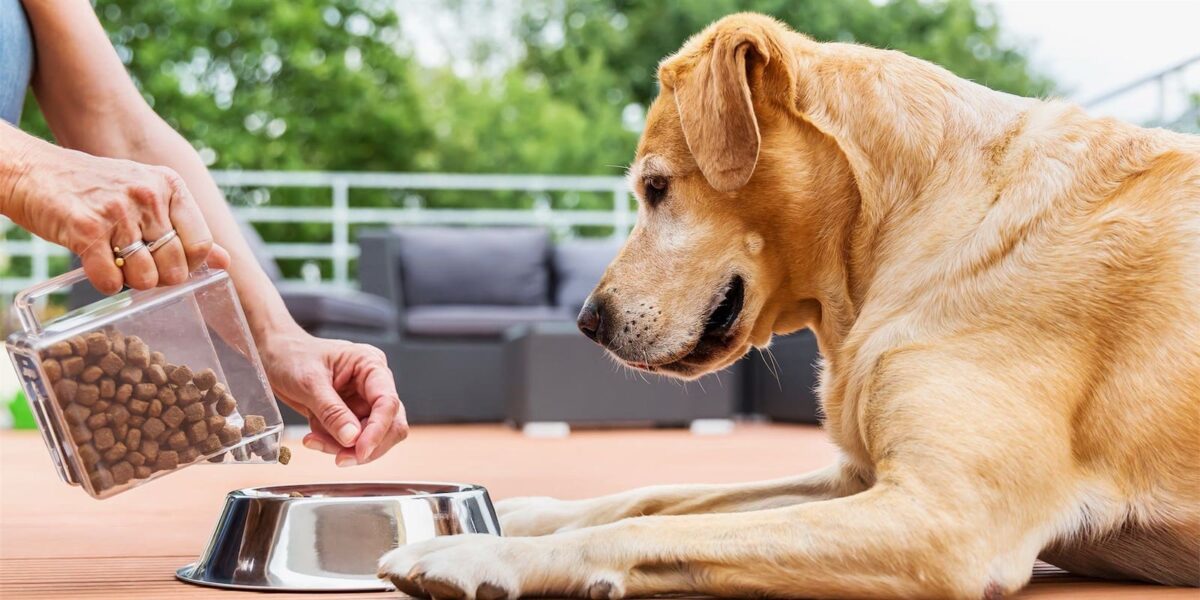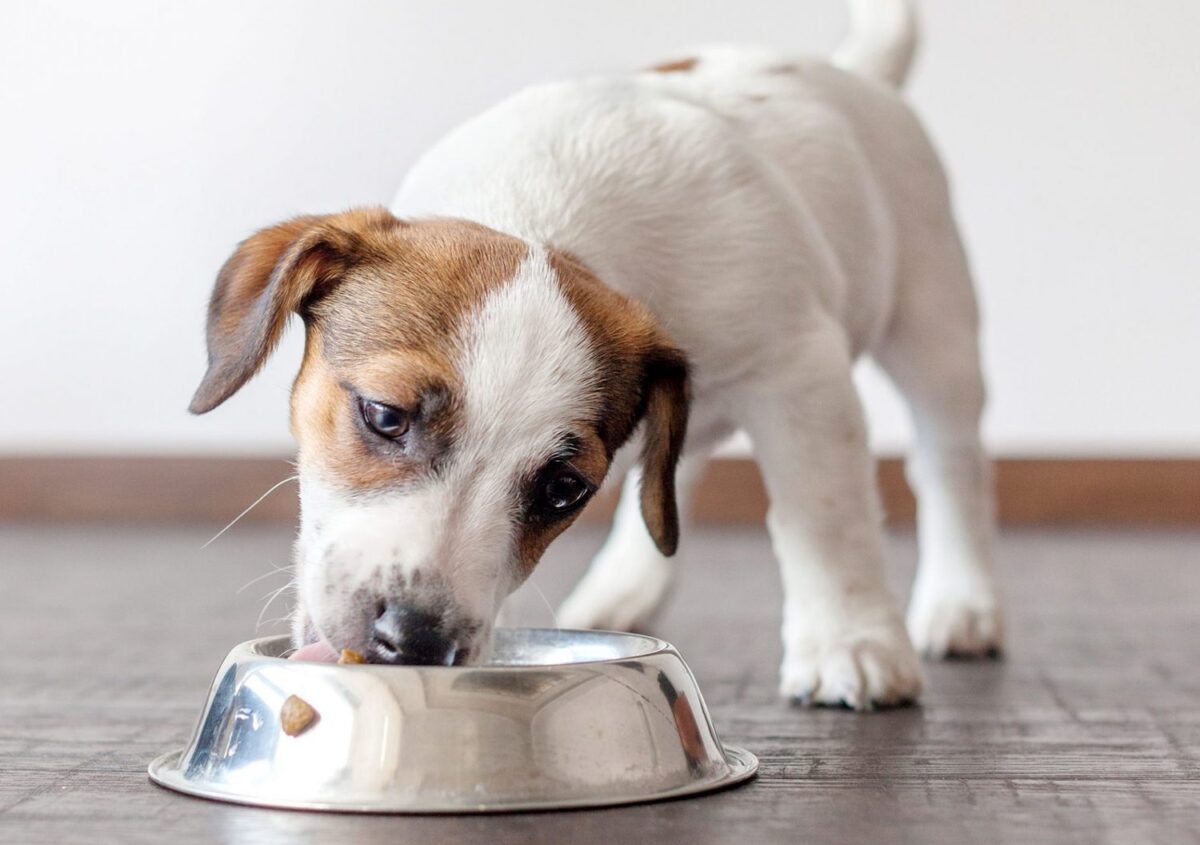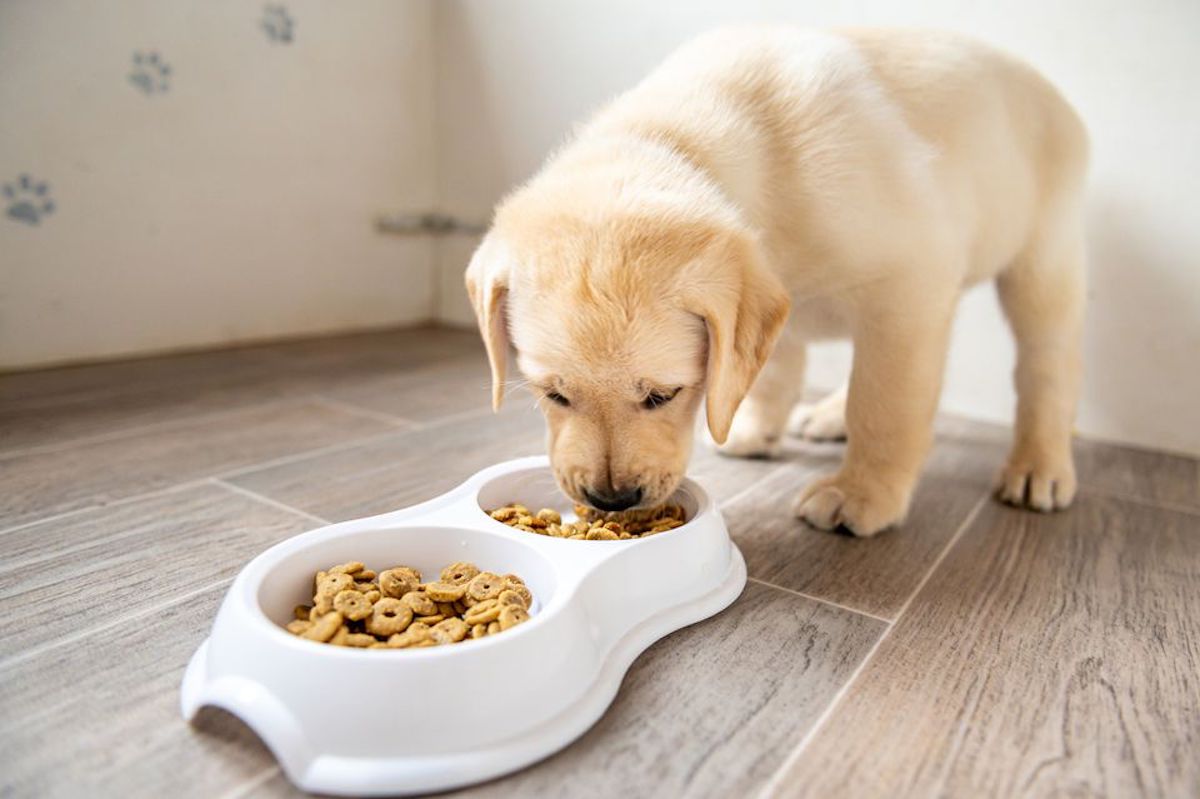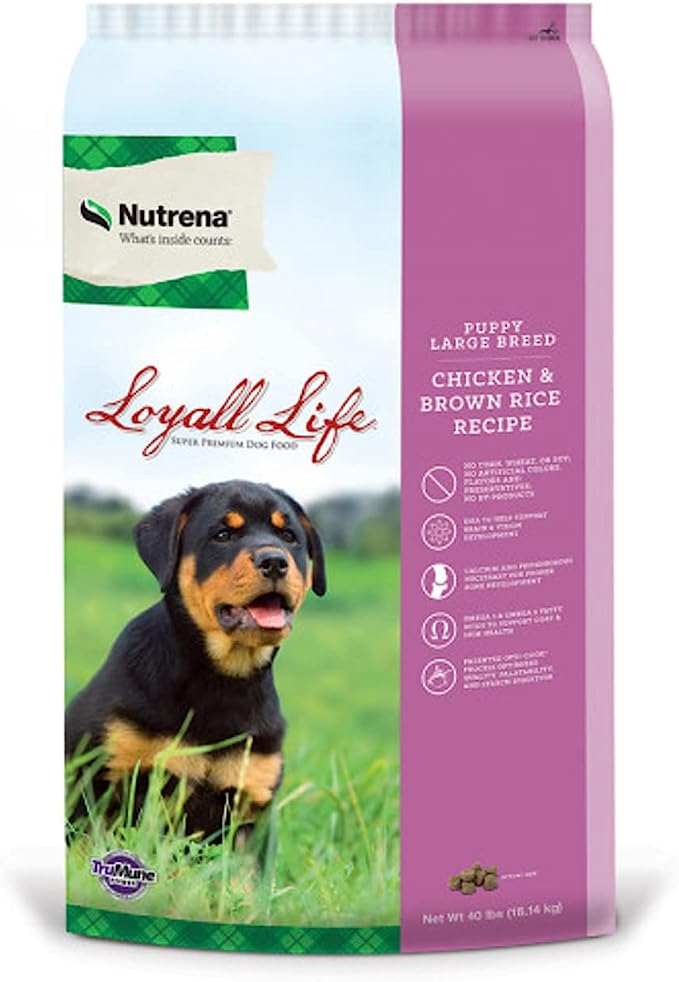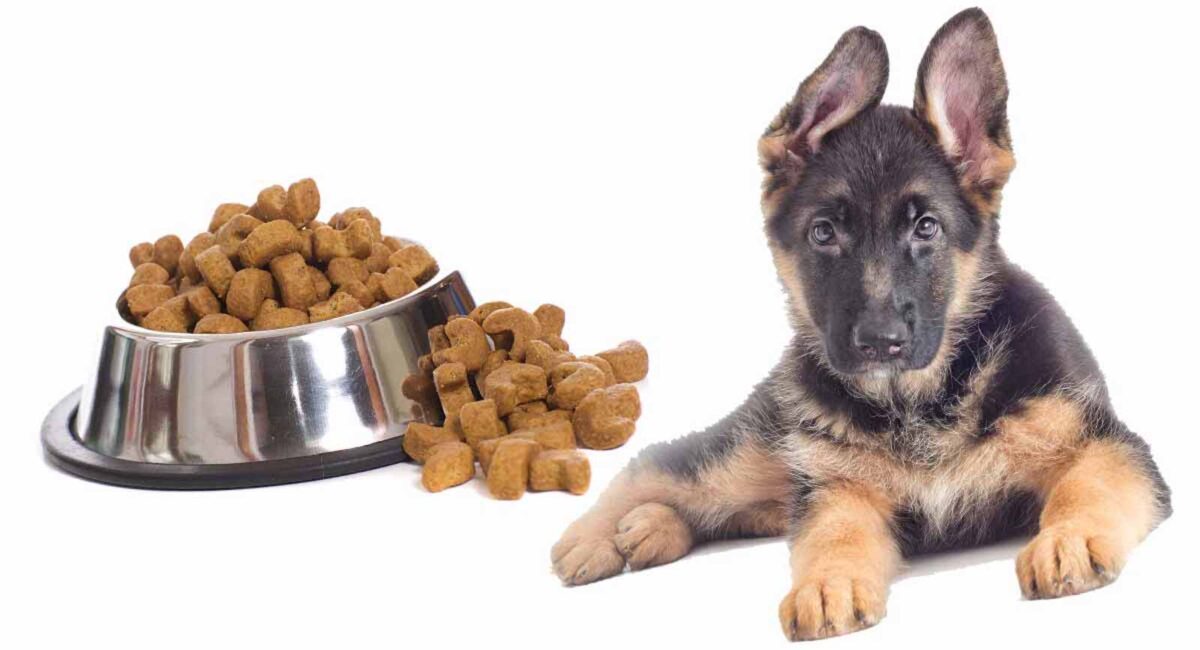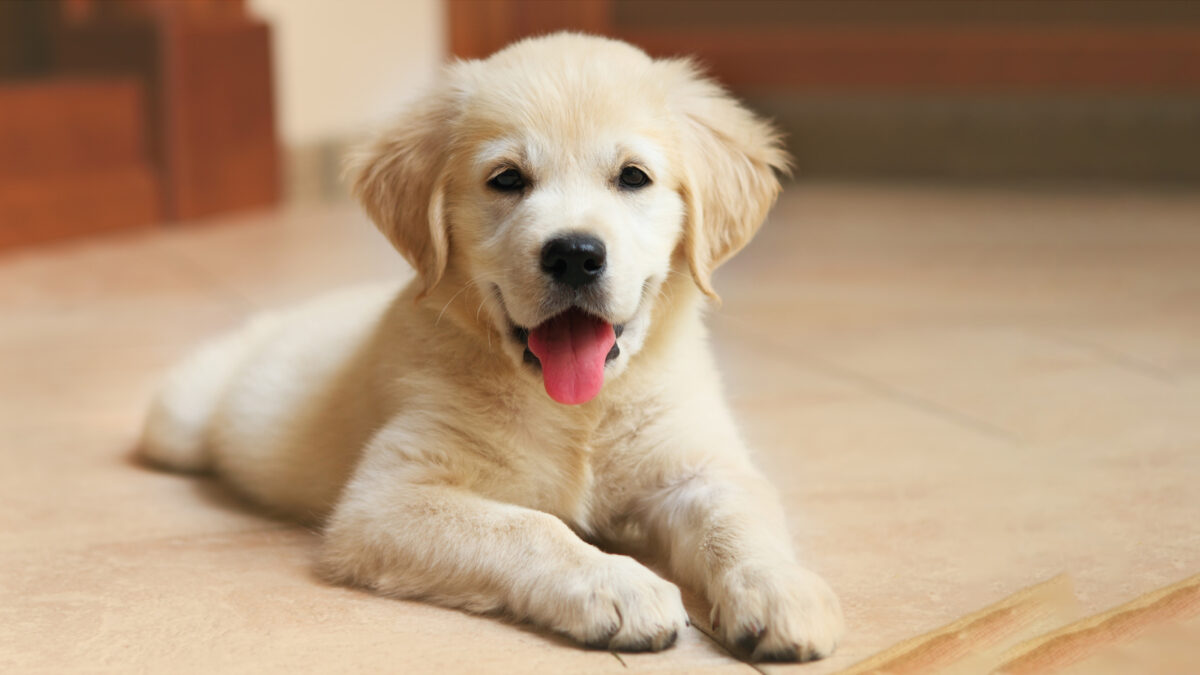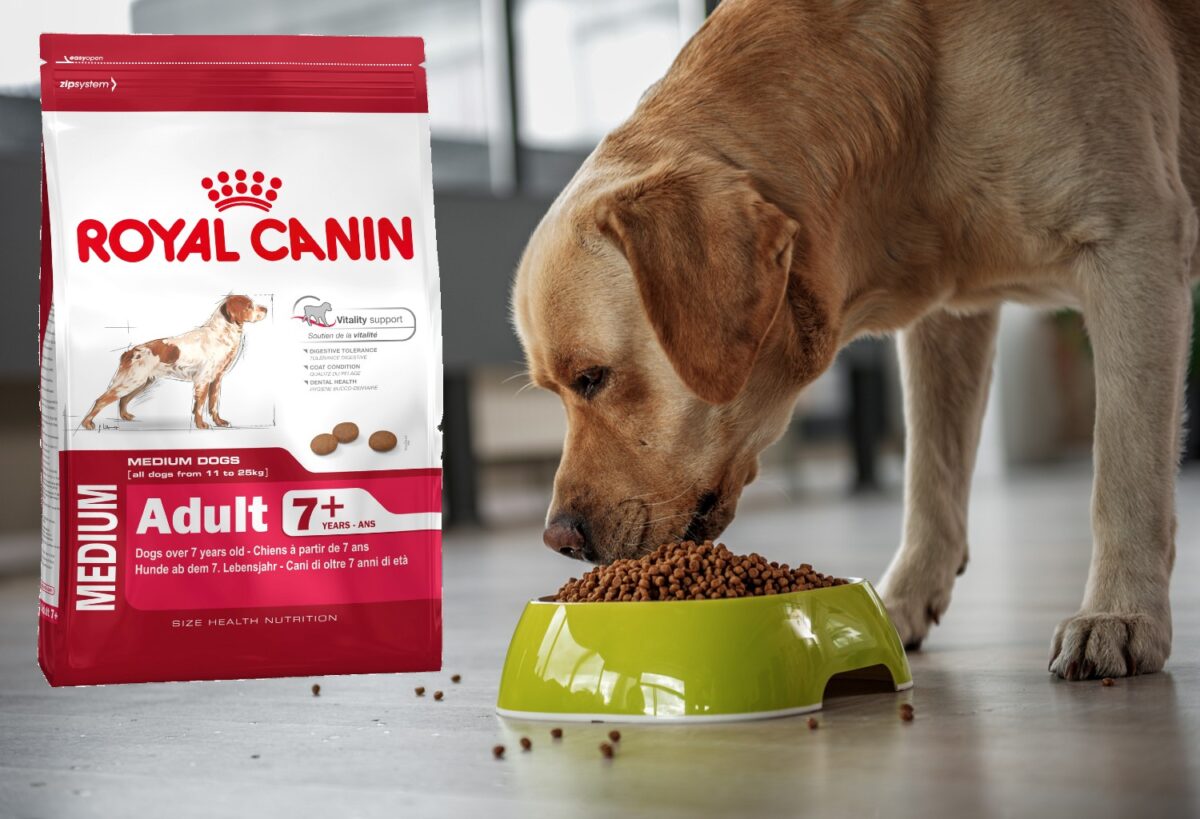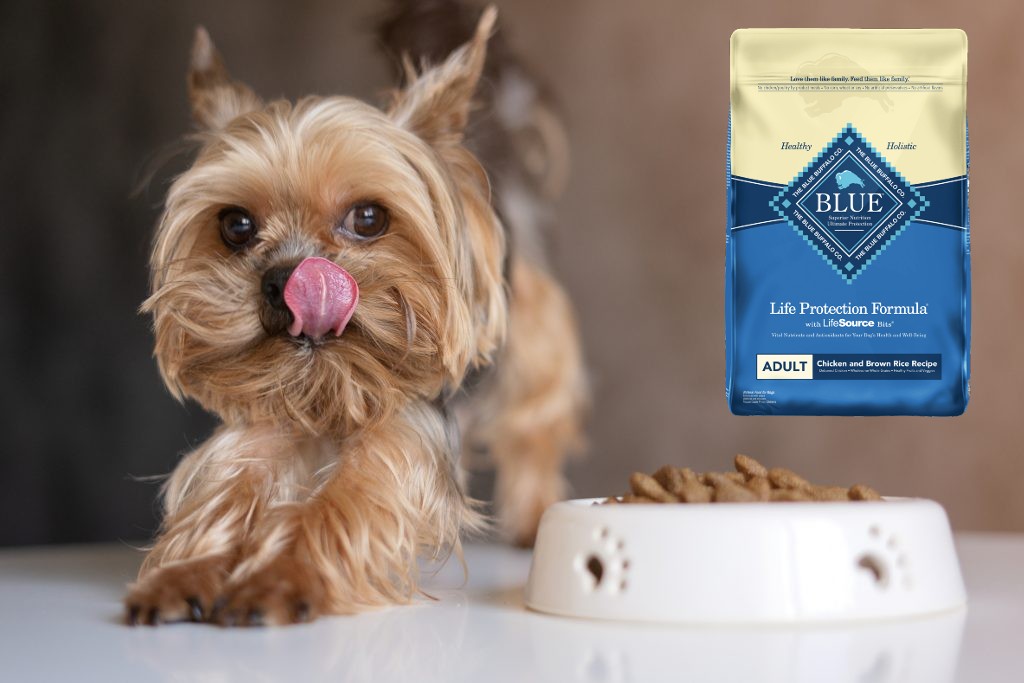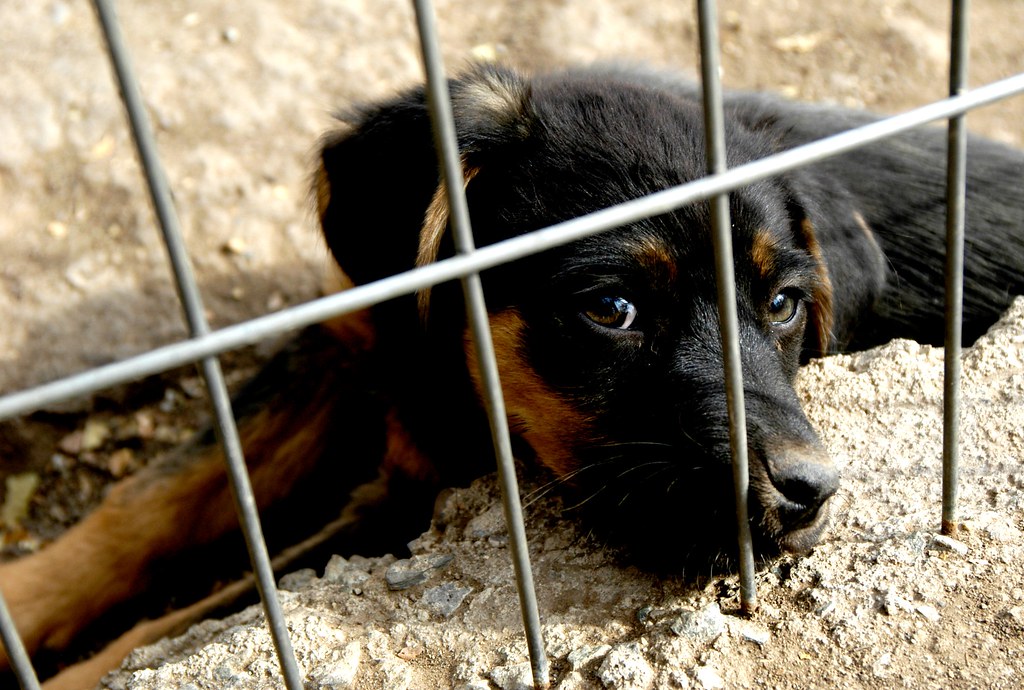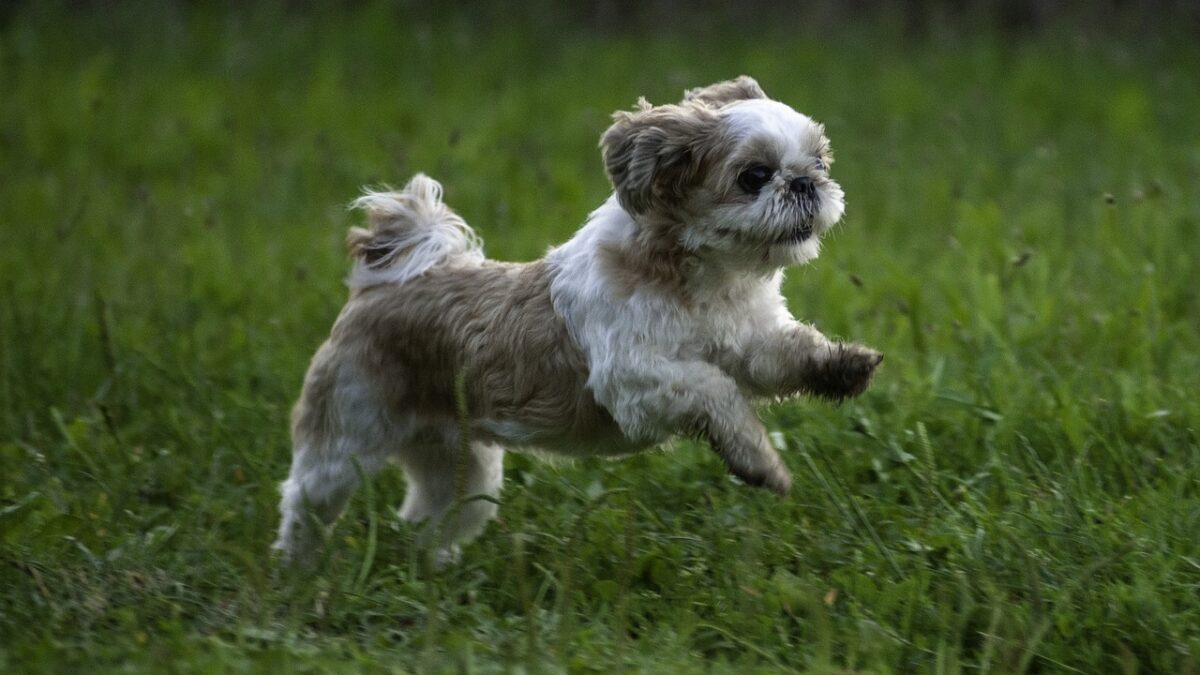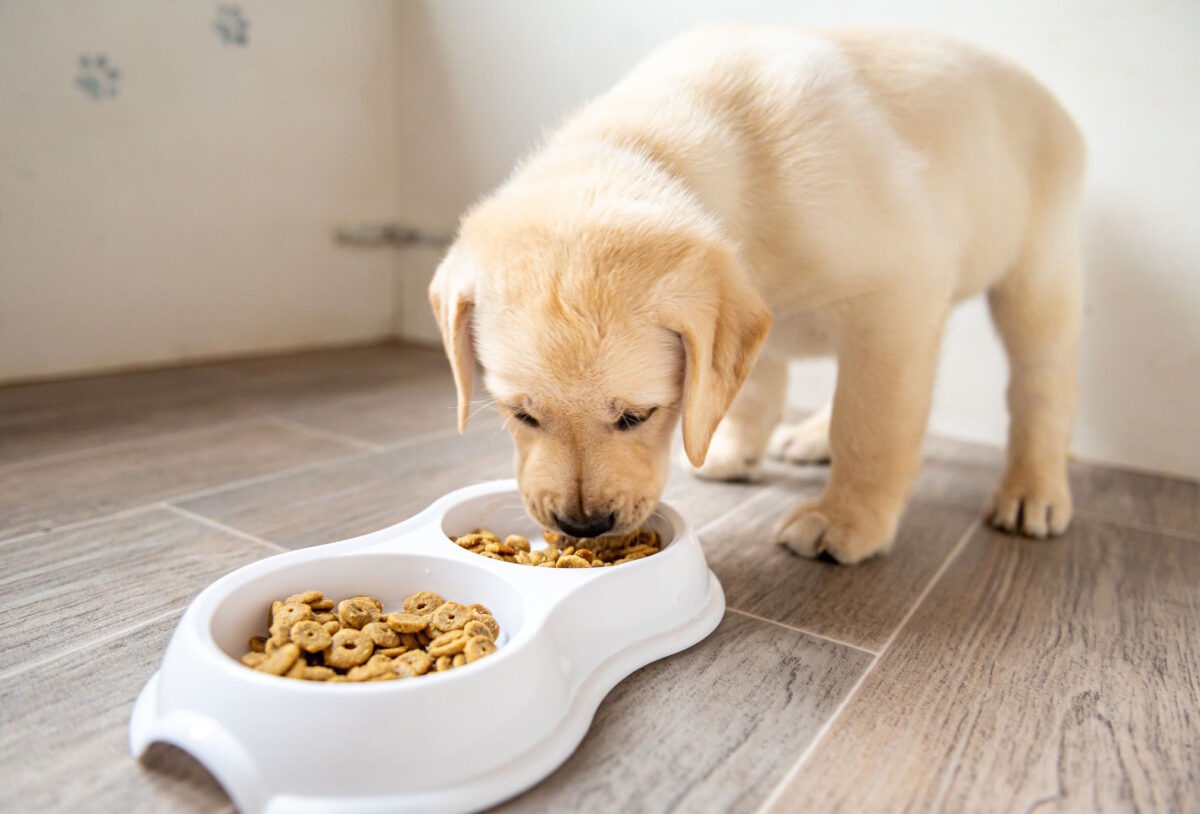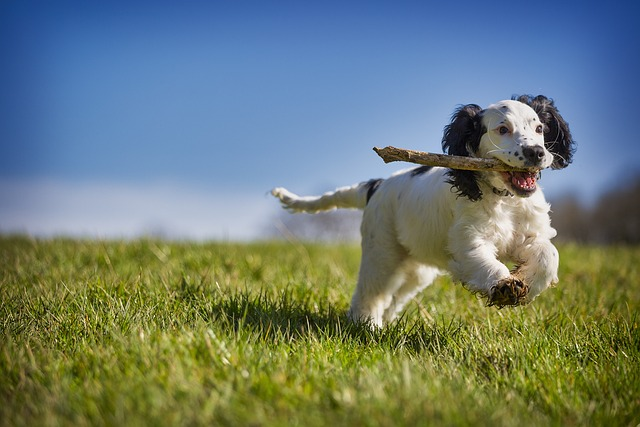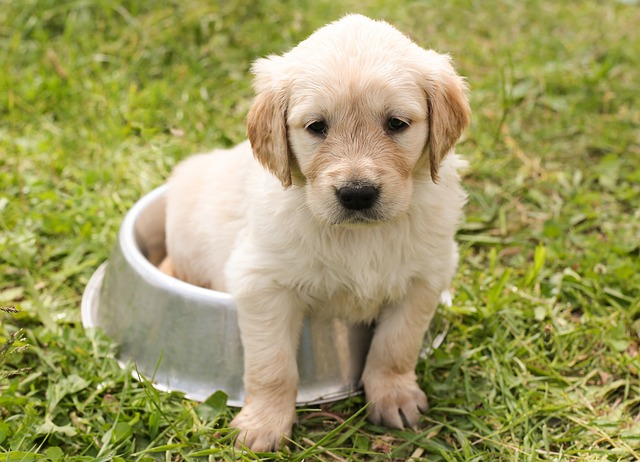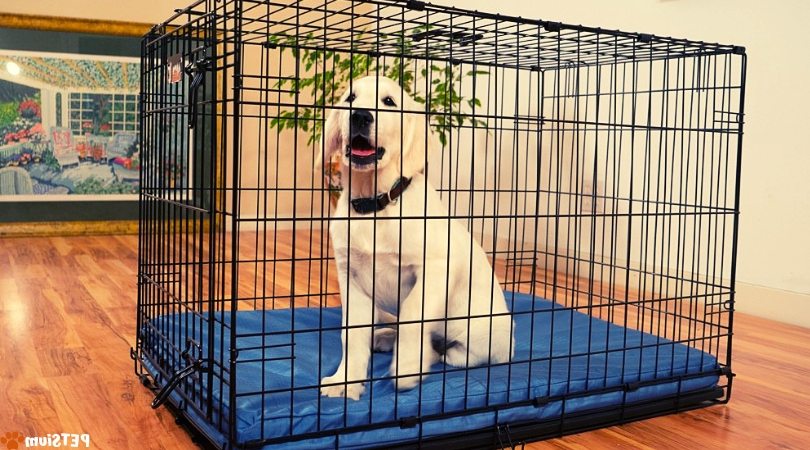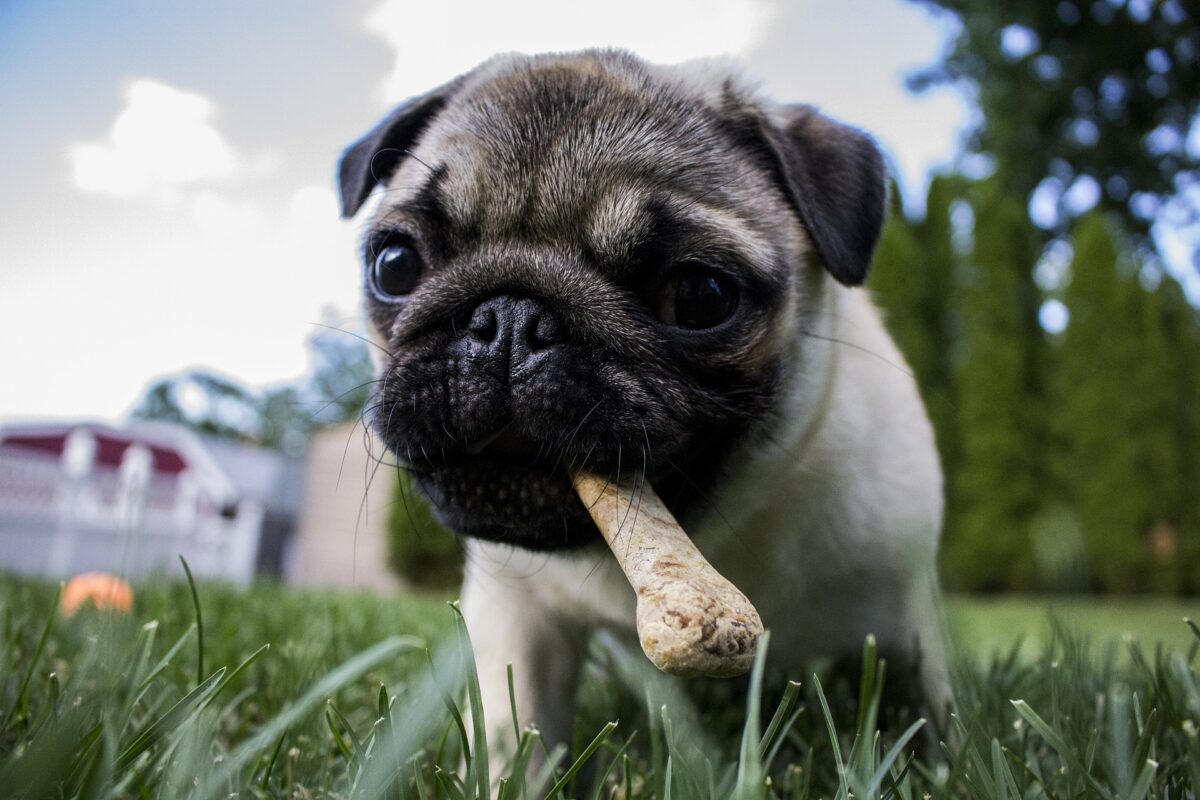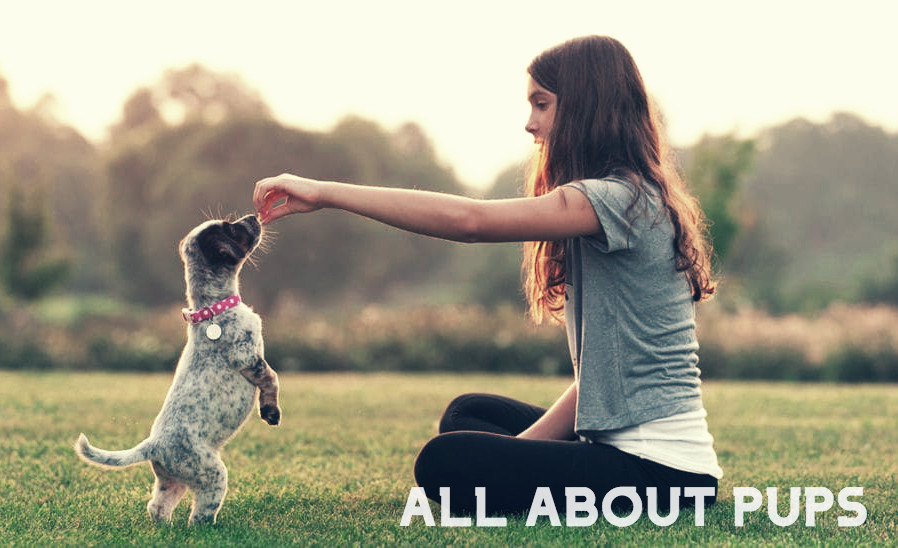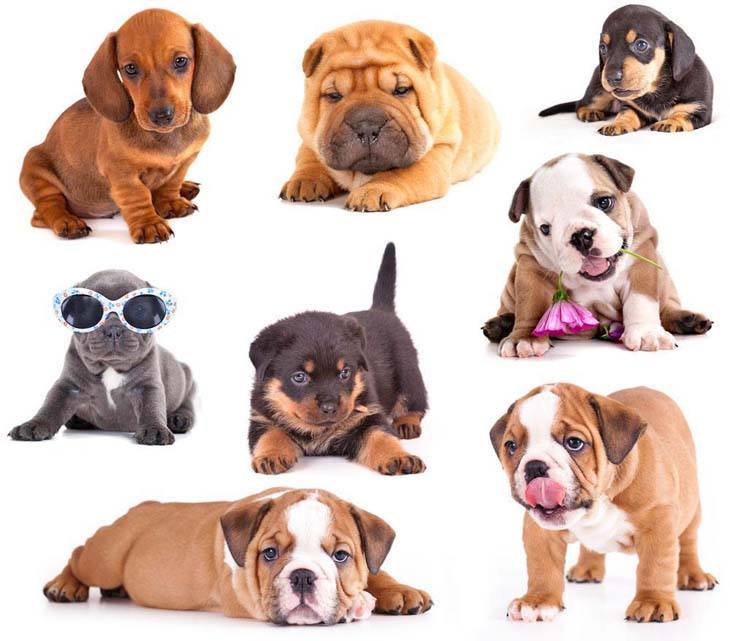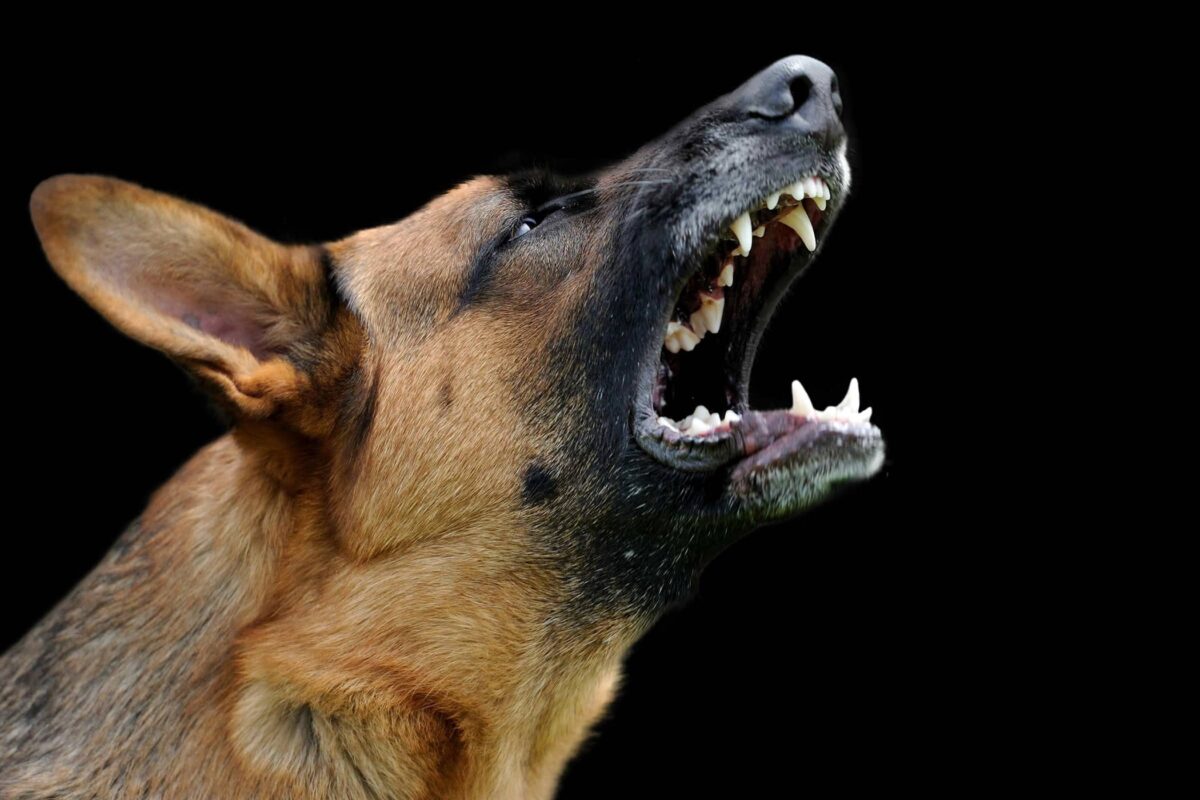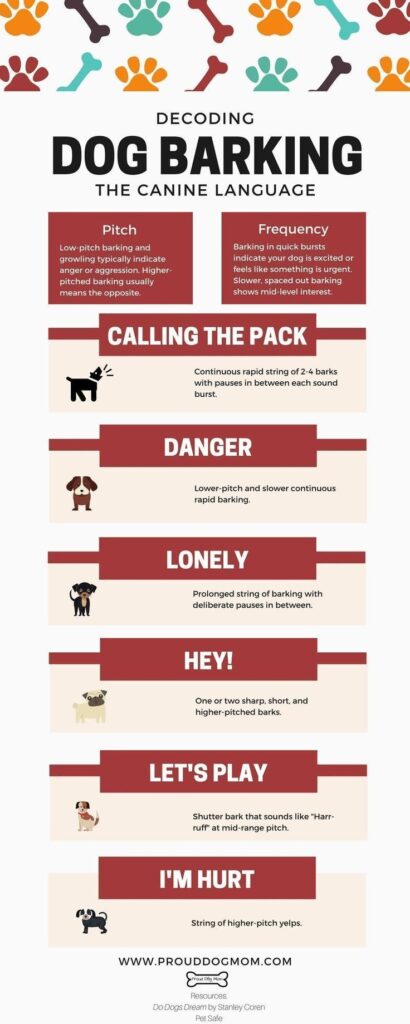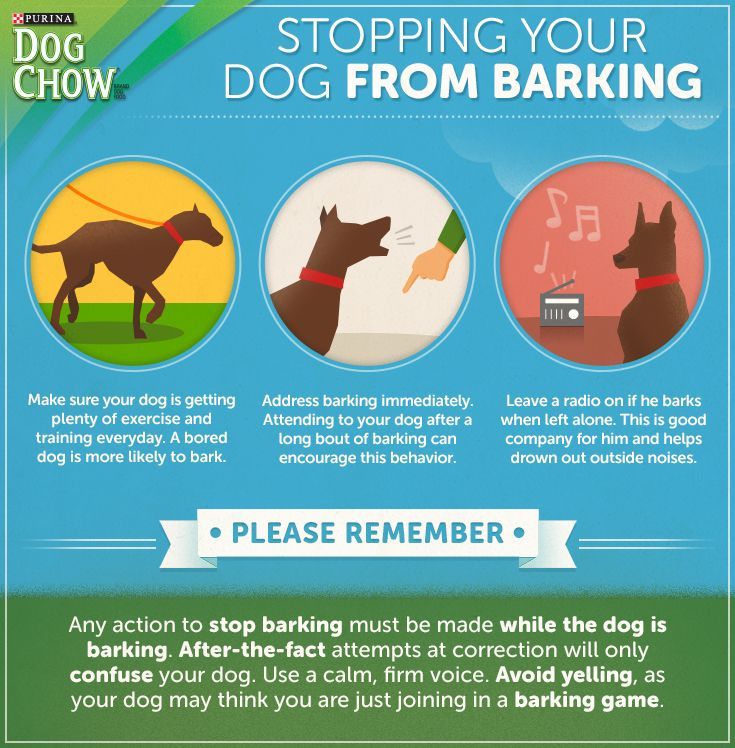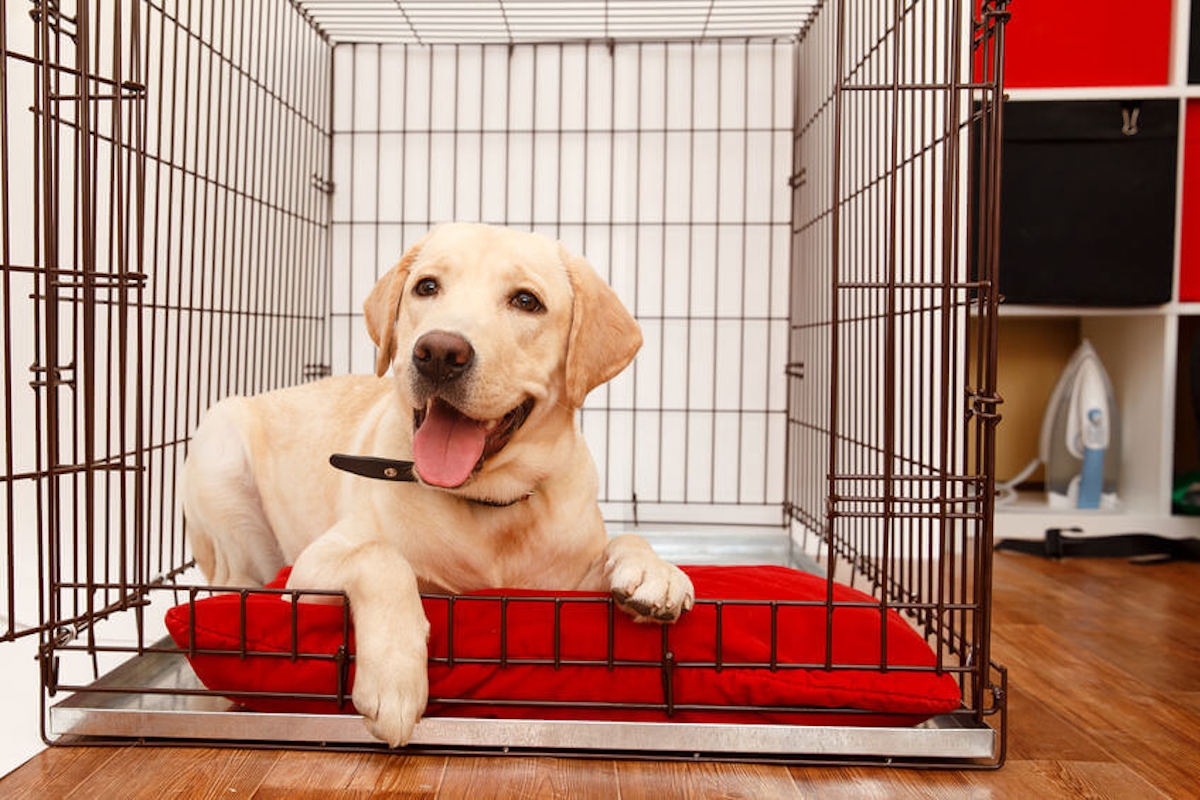English Lab vs American Lab – What Are The Differences?
Introduction
All About English Lab vs American Lab
In this article, we will outline the major differences between the English Lab vs American Lab. And point you in the right direction in choosing either Labrador breed. Both are wonderful dog breeds and you can’t go wrong with either for your family!
Are you a dog owner looking for family dogs that are also great water dogs? Consider the English Labrador and American Labrador Retriever breeds. While both are Labs, they have distinct differences that may impact your decision, especially if you plan to enter them in dog shows.
Labrador Retrievers, a popular breed of dog, come in different types such as English Labs (also known as bench Labs) and American Labs (also known as field Labs). The American Kennel Club outlines both breeds in detail on their site. English Labs are the labradors bred for their physical appearance which follows the breed standard and are commonly found in Great Britain. On the other hand, American Labs are type Labradors bred for their hunting abilities and are commonly found in the United States.
One of the most noticeable differences between these two types of Labrador Retrievers, which are a breed standard of dog that is commonly seen in dog shows, is their physical build. English Labs, which adhere to the same breed of standard, have a stockier build, shorter legs, and a broader head compared to American Labs. In contrast, American Labs also adhere to the same, breed standard of standard but have a leaner build, longer legs, and a narrower head compared to English Labs.
If you’re looking for a dog that fits the standard “Labrador Retriever” look with a broad head and stocky build, an English type lab or “British Lab” might be perfect for you. Similar to Golden Retrievers, both types can be amazing family pets! However, if you’re more interested in having an energetic hunting companion with longer legs and leaner build then an American Lab or “Bench Lab” pup might be more suitable.
So what’s the difference between the English Labrador or labrador retriever breed and American american Labrador retriever? Let’s explore this topic further and find out which one is best suited for you. If you’re interested in British Labs, also known as type Labradors or bench Labs, you may want to compare them with the more commonly known Labrador Retriever breeds found in America.
Appearance: English vs American Labrador
What does a typical American or field type Labrador look like?
American Labrador Retrievers, also known as field-type Labs, are bred according to breed standard for their working ability and athleticism. They have a leaner and more athletic build compared to their English counterparts. These pups have a narrower head with a longer muzzle, giving them a more streamlined appearance. Their ears are set higher on the head and are not as wide apart as those of the full English Labrador retriever. Although they are not known for pointing, their excellent retrieving skills make them a popular choice for hunting.
One of the most distinguishing features of the Labrador Retriever is their coat. American Labs, a type of Labradors, have a shorter and thinner coat that lies closer to their body, making them look more streamlined according to the breed standard. This coat is easier to maintain than the thicker double coat of English Labs, which requires more grooming. If you’re considering getting a pup, knowing the differences between the types of Labradors can help you make an informed decision.
Another significant difference between American and English Labs is their type of Labradors. American Labs are divided into two types: field and bench labradors. Field Labs are lighter in weight and more athletic, while bench Labs are heavier and stockier. English Labs, on the other hand, are known for their pointing abilities. Male American Labs typically weigh between 65-80 pounds while females weigh between 55-70 pounds. Consult your local Kennel Club for expert advice.
What does a typical English Lab type or show-bred Labrador look like?
English Labs, also known as bench type Labradors, are often bred for their show ring show purposes and have a stockier build and thicker double coat compared to American Labs. These dogs have broader heads with shorter muzzles that give them a more blocky appearance. While they are not typically used for pointing, they are still highly sought after for their beauty and grace in the show ring.
One of the most noticeable differences between the English labrador, and American Labs, also known as bench type Labradors, is their coat. The double coat of an an English Labrador consists of a soft undercoat covered by a thick topcoat that can come in various shades such as black fox red, chocolate, yellow or silver.
English Labradors, also known as British Labs or Bench Labs, tend to be heavier than their American counterparts; males can weigh up to 100 pounds while females can weigh up to 80 pounds.
Size Difference between English and American Labs
English Labs are generally taller and heavier than American Labs.
One of the most significant differences between English and American Labs is their size. English Labs are typically larger, with a more substantial build compared to their American counterparts. They can grow up to 21.5 to 24.5 inches to inches tall at the shoulder, while American Labs usually reach up from 21.5 to 24.5 inches to 22.5 inches. This difference in height may seem small, but it can be noticeable when comparing the two breeds side by side on a bench.
The weight of an English Lab is also much higher than that of an American Lab. An adult male English Lab can weigh up to 100 pounds, whereas an adult male American Lab usually weighs between 65-80 pounds. Female English Labs are also heavier than female American Labs, weighing around 70-90 pounds compared to the latter’s average weight of around 55-70 pounds. When it comes to bench, an English Lab can easily surpass the weight capacity of a standard bench, making it important to have a sturdy one for them to sit on.
The head of an English Lab is typically larger and wider than that of an American Lab.
Another noticeable difference between these two breeds is their head size. The head of a British Lab, also known as a bench Lab, is typically broader and more massive than that of an American Lab. This difference in head size gives them a distinct look from each others other dogs.
English Labs have a blocky head with a thick neck, while the head of an American lab appears narrower with a thinner neck. The muzzle length for both breeds is similar; however, the width differs significantly. When sitting on a bench, the differences in head and neck structure between the two breeds become more apparent.
The size difference between the two types of labs is due to their breeding purposes and origins
The reason for such a significant size difference between these two breeds lies in their breeding purposes and origins. Historically, breeders in England bred Labrador Retrievers as hunting dogs for retrieving game birds from water or land-based environments. British Labs, also known as English type, were bred for bench shows while American Labs, also known as American type, were bred for field work.
To perform this task effectively, they needed large dogs with strong builds capable of carrying heavy loads over long distances without tiring quickly. Therefore, they selectively bred larger dogs with muscular builds, resulting in the English Lab we see today. However, it’s worth noting that there are also American Labrador breeds that have been developed over time, which differ slightly from the British Labs in terms of body size and shape. These American types tend to be taller and leaner, making them better suited for fieldwork and hunting activities.
On the other hand, American breeders focused on creating a dog that could perform well in field trials and hunting competitions. They bred dogs with a leaner build, better suited for running long distances and chasing game. However, British labs, also known as English yellow Lab-radors or bench labs, are known for their stockier build and more laid-back temperament compared to the American-bred English type yellow lab.
English Labs have a more muscular build compared to American Labs.
English Labs are known for their muscular build, which is another significant difference between them and their American counterparts. Their broad chest, thick necks, and powerful legs give them a solid foundation for carrying out tasks such as retrieving game birds or assisting people with disabilities.
American Labs have a leaner build with longer legs than English Labs. This build makes them better suited for running long distances and performing tasks that require agility rather than pure strength.
Tail Differences: English vs American Lab
British Labs – Otter Tails
One of the most noticeable differences between the english and american labradors, type of english labrador, and american labradors, and English labs and American labs is their tail. British labs have a thicker and shorter tail compared to American labs. The tail of British labs is described as an “otter tail” due to its thick base and tapering towards the tip. This distinctive feature is one of the reasons why many people prefer English labs over their American counterparts.
The otter tail, commonly found in English Labradors or British Labs, has a thick base that gradually tapers down towards the tip, giving it a unique shape resembling an otter’s tail. This type of tail was developed by breeders in England who wanted to create a Bench Lab, an American Labrador that could retrieve game from water without getting cold or wet.
British and American type labradors were bred for hunting purposes, while the american and English labs and type labradors were bred for show. The British and american type lab-rador’s otter tail helps them balance in the water, making it easier for them to swim and move around.
American Labs – Longer and Thinner Tails
On the other hand, American labs have a longer and thinner tail that is straighter in appearance. While not as distinctive as the otter tail, this type of tail is still an important characteristic of the breed. The same can be said for English Labradors.
American labradors were bred more for show than hunting purposes, so their tails are less functional than those of British labs. However, the english type of labradors have tails that are more versatile and aid in their agility and balance while running or walking.
Despite these differences in appearance, both British labs and American labs are equally intelligent, loyal, and friendly dogs that make excellent companions for families with children or active individuals who enjoy spending time outdoors.
Personality and Temperament Differences between English and American Labs
Calm and Laid-back: English Labs
English Labs are known for their calm and laid-back personalities. They are typically more reserved than their American counterparts, making them suitable for households with a quieter lifestyle. Because of their easy-going nature, they tend to be less energetic and require less exercise compared to American Labs.
English Labs, also known as American type Labrador Retrievers, were originally bred as hunting dogs, which is why they have a more serious demeanor compared to other Labrador Retrievers. They have a strong work ethic and are highly trainable, but they may take longer to warm up to new people or situations.
Energetic and Playful: American Labs
On the other hand, English Labs, also known as English type Labradors, are known for their high energy levels and playful personalities. They love to play fetch, go on long walks or runs, and engage in other physical activities that keep them active.
English Labrador is an excellent first family dog or pet due to their outgoing personalities. They enjoy being around people and thrive in social situations, which is typical of the English type. However, this also means that they can become bored easily if not given enough attention or exercise.
Hunting vs Family Pet
One of the main differences between the English lab and American labs is how they’re used. English Labs were originally bred as hunting dogs while American Labs were bred as family pets.
English and American labs have been specifically bred for hunting purposes since the 19th century. They excel in retrieving game such as birds due to their strong work ethic, intelligence, trainability, loyalty, strength, endurance capabilities. The American type of Labrador is known for its slightly different physical characteristics compared to the English Labrador.
American labs were developed from breeding programs in North America from the early 20th century onwards with an emphasis on creating a dog breed that was friendly towards humans but still had good, working dog and abilities like its British cousin, the English type.
Friendly Personalities
Both the American type Labrador and the the bench labrador breed are known for their friendly personalities which make them popular choices for families with children or those looking for loyal companionship. Additionally, the field lab and American Labrador are also great options wonderful family pets or for those seeking a friendly and loyal furry friend.
However, while both breeds share many similarities, there are subtle differences in their temperaments. English Labs tend to be more reserved with strangers compared to their outgoing American counterparts. They may take longer to warm up to new people or situations, but once they do, they are fiercely loyal.
American English Labs are known for being outgoing and friendly towards everyone they meet. They love attention and thrive in social situations, making them great pets for families with children or those who enjoy an active lifestyle. This type of Lab is highly sought after for their excellent temperament and intelligence.
Energy Levels and Temperament Comparison
English Labs Have a Lower Energy Level Compared to American Labs
One of the significant differences between English Labs and American Labs is their energy levels. English Labs have a lower energy level compared to their American counterparts, which means they require less exercise. This difference in energy levels can be attributed to the breeding history of both breeds. English Labs were bred for retrieving, while American Labs were bred for field trials.
American Labrador Labs are known for being calm and laid-back dogs, making them an excellent choice for families with children or senior citizens who may not be able to keep up with a high-energy dog. They are content with lounging around the house, taking short walks, and playing fetch in the backyard. The American type is also a great option for those looking for a Lab with a slightly different appearance.
On the other hand, American Labs are known for their high energy levels and require more exercise than English Labs. They need daily physical activity that challenges them physically and mentally to prevent destructive behavior such as chewing on furniture or digging holes in the yard.
Energy Levels of Both Breeds Can Vary Depending on Individual Differences
While it’s generally true that English Labs have lower energy levels than American Labs, it’s essential to note that individual differences exist within each breed. Some English labs may have higher energy levels than others due to genetic factors or environmental factors such as diet and exercise routine.
Similarly, some American labs may have a lower energy level compared to others due to individual differences. Therefore it’s crucial to assess each dog’s personality when choosing between an English Lab or an American Lab.
English Labs Have a Calm and Laid-Back Temperament While American Labs Are More Active And Playful
Apart from their different energy levels, another factor that distinguishes these two breeds is their temperament. The temperament of an English Lab is typically calm and laid-back, making them ideal family pets who love spending time indoors with people. On the other hand, the American Labrador, also known as the American type, has a more active temperament.
In contrast, American labs are more active and playful, making them a better choice for families who enjoy spending time outdoors. They are always ready to play and run around, making them perfect for families with active lifestyles.
Both Breeds Have Excellent Abilities in Hunting, Retrieving, and Obedience Training
Both English Labs and American Labs have excellent abilities in hunting, retrieving, and obedience training. These skills are what make them popular pets among many dog lovers lab owners worldwide.
American Labrador is a breed of Labrador Retriever that was initially bred as retrievers for hunters due to their excellent sense of smell and retrieving abilities. They are known for being great swimmers and can retrieve game from water bodies without any difficulty.
Similarly, American labs were bred as hunting dogs but later became more popular as family pets due to their playful nature and trainability. They are also known for their exceptional retrieving skills, which makes them ideal companions for outdoor activities such as hiking or camping.
Height is Not a Significant Factor in Determining Energy Levels or Exercise Requirements For Either Breed
Height is not a significant factor. While English Labs tend to be shorter than American Labs on average, this does not mean that they have lower energy levels or require less exercise.
The energy level of a dog is determined by various factors such as genetics, diet, environment, age, sex, and health status. Therefore, the height of an American Labrador, English type Lab, Field Lab, or Bench Lab alone cannot be used to accurately determine their energy level.
Training and Hunting: English vs American Lab
English Labs: The Ideal Hunting Companion
English Labs are known for their stocky build, calm temperament, and exceptional hunting skills. They are the perfect hunting companion due to their strong noses, natural retrieving instincts, and excellent swimming abilities. Their broad chest, thick tail, and otter-like tail make them well-suited for cold water retrieves.
Training an an English Labrador retriever is similar to training any other type of Labrador Retriever. However, it may require more patience and consistency due to their slower learning pace. It’s important to start training your English Labrador retriever from a young age using positive reinforcement techniques such as treats or praise.
Hunting with a Lab requires specialized training to ensure they can retrieve game without damaging it. This involves teaching them how to “soft mouth” or hold game gently in their mouths without biting down too hard. It’s also important to teach them basic obedience commands like “sit,” “stay,” and “come” so they can be controlled in the field.
Field trials test a Lab’s hunting skills and obedience in simulated hunting scenarios. They involve tasks such as marking multiple birds, blind retrieves across water, and honoring another dog’s retrieve. English Labs excel in these trials due to their natural retrieving instincts and calm demeanor.
American Labs: Versatile Family Pets
American Labs are leaner than their English counterparts with higher energy levels which make them ideal for dog shows or as family pets. They have been bred primarily for show purposes rather than hunting ability.
Training methods for American Labs are similar to those used for English Labs but may require more exercise due to their high energy levels. As with all dogs, positive reinforcement techniques should be used when training your American Lab.
While not specifically bred for hunting purposes, American Labs can still be trained as capable hunters if given the right training from an early age. However, they may not be quite as suited for hunting as English Labs due to their leaner build and higher energy levels.
Which is the Best Choice?
Both English and American Labs excel in their respective areas, but it ultimately comes down to personal preference and intended use. If you are looking for a hunting companion, an English Lab may be the best choice due to their natural abilities and calm temperament. On the other hand, if you are looking for a versatile family pet that can also be trained as a hunter, an American Lab may be the better choice.
Grooming and Feeding Comparison
English Labs: Stocky and Broad, Requiring More Exercise to Stay Fit
The English Labrador Retriever is a classic breed that has been popular for decades. These dogs are known for their stocky build, broad heads, and thick fur. They tend to be heavier than their American counterparts and require more exercise to stay fit.
One of the most important aspects of grooming an English Lab is brushing their coat regularly. Due to their thicker fur, they may need more frequent grooming sessions compared to American Labs. This can help prevent matting and tangles in smooth coat that can cause discomfort or even skin infections.
It’s important to choose high-quality dog food that meets the nutritional needs of bench labs and field labs. These dogs have a tendency to overeat and gain weight easily, which can lead to health problems like joint pain or heart disease later on in life.
American Labs: Taller and Leaner, Suited for Agility Training
American Labrador Retrievers are taller and leaner than their English counterparts. They have a sleeker appearance which makes them better suited for activities like agility training or running.
Like English Labs, American Labs also require regular grooming sessions to keep their coats healthy and shiny. However, they may not need as much brushing due to their shorter hair length.
Feeding requirements are similar for both breeds with high-quality dog food being recommended. It’s important not to overfeed your American Lab as well since they too can easily gain weight if given too much food.
Proper Feeding Habits for Both Breeds
Both English Labs and American Labs have similar feeding requirements. High-quality dog food should be the foundation of any diet plan you create for your furry friend.
It’s essential not only what you feed your dog but also how much you feed them. Overfeeding is a common problem among Labrador Retrievers as they love to eat and have a tendency to gain weight easily. This can lead to health problems like joint pain, heart disease, or diabetes.
To prevent overeating, it’s recommended that you feed your dog smaller portions throughout the day instead of one big meal. You should also avoid feeding them table scraps or human food as this can cause digestive issues and lead to obesity.
Grooming Habits for Both Breeds
Grooming is an essential part of owning a Labrador Retriever regardless of whether you own an English or American breed. Regular grooming sessions help keep their coat healthy, shiny, and free from tangles or mats.
For English Labs with thicker fur, daily brushing may be necessary to prevent matting and tangling. American Labs with shorter hair may not need as much brushing but still require regular grooming sessions.
In addition to brushing, you should also check your dog’s ears regularly for signs of infection or buildup. Trimming their nails every few weeks is also important as long nails can cause discomfort and even lead to injury.
Best Dog Foods for Labs: Puppies, Adults, and Seniors
High-Quality Protein Sources for Active Lifestyle
Labs are great dogs that require a balanced diet to maintain their energy levels. One of the most important things to consider when choosing the best dog food for labs is high-quality protein sources. Chicken, beef, and fish are all excellent choices as they provide essential amino acids that support muscle growth and repair.
When looking for protein sources in your lab’s food, it’s important to choose whole meats rather than by-products or meal. Whole meats contain more nutrients and are easier to digest than processed meat products. Avoid foods with fillers such as corn or wheat as these can cause digestive issues and may not provide adequate nutrition.
Puppy-Specific Formula for Growth and Development
Puppies require more calories and nutrients than adult or senior dogs due to their rapid growth and development. When selecting a puppy-specific formula for your chocolate lab or pup, look for foods that contain high-quality protein sources like chicken or lamb along with healthy fats such as omega-3 fatty acids from fish oil.
It’s also important to choose a food that contains essential vitamins and minerals like calcium, phosphorus, and vitamin D which help support bone growth. Many puppy formulas include prebiotics or probiotics which promote healthy digestion.
Balanced Diet with Whole Grains, Vegetables, and Fruits for Adult Labs
Adult labs benefit from a balanced diet that includes whole grains like brown rice or oatmeal along with vegetables like sweet potatoes or carrots. Fruits like blueberries or apples can also provide antioxidants that help boost overall health.
When selecting an adult formula for your lab dog food make sure it contains all the necessary nutrients including protein sources such as chicken or beef along with essential vitamins like A,C,E,K,B1,B2,B6,B12,D3,Niacin,Folic Acid,and Choline . Also, consider the fat content as adult dogs require less fat than puppies or seniors.
Senior-Specific Formula for Special Dietary Needs
Senior labs may have special dietary needs due to age-related health issues such as joint problems or decreased appetite. When selecting a senior-specific formula for your lab, look for foods that contain joint-supporting ingredients like glucosamine and chondroitin. Choose foods that are easy to digest and contain high-quality protein sources like chicken or fish.
It’s also important to consider the fat content of senior dog food as older dogs may not be as active and require fewer calories. Foods with added fiber can help keep your senior lab feeling full while promoting healthy digestion.
Recommended by Reputable Kennel Clubs
Whether your lab is a family pet, show dog, or service dog, feeding them a high-quality diet recommended by reputable kennel clubs can help ensure they live a long, healthy life. Look for recommendations, same breed of or same dog only, from organizations such as the American Kennel Club (AKC) or the United Kennel Club (UKC).
When choosing a food based on recommendations from these organizations make sure it meets all of your lab’s nutritional needs including protein sources, essential vitamins and minerals along with any additional requirements based on their age or activity level.
Choosing Between English and American Labrador
Why Choose an English Show-Type Labrador?
English Labradors, also known as show-type Labradors, are bred primarily for their looks and temperament. They have a stockier build with a broad head, thick neck, and shorter legs. Their coat is thicker and tends to be more luxurious than their American counterparts. These dogs are generally calmer and more laid-back than their American counterparts.
If you’re looking for a dog that will be your loyal companion, an English show-type Labrador may be the right choice for you. They make great family pets because of their gentle nature and love for human attention. They’re also well-suited for apartment living since they don’t require as much exercise as other breeds.
One thing to keep in mind when choosing an English show-type Labrador is that they can be prone to certain health issues due to their breeding history. For example, they may suffer from hip dysplasia or ear infections more frequently than other breeds.
Why Choose an American Field-Trial Type Labrador?
American Labradors, also known as field-trial type Labradors, are bred primarily for their serious working dog and abilities. They have a leaner build with longer legs that allow them to run faster and jump higher than English Labradors. Their coat is thinner and coarser than their more English labrador, counterparts which makes them better suited for warmer climates.
If you’re looking for a dog that can keep up with your active lifestyle, then an American field-trial type Labrador might be the right choice for you. These dogs have boundless energy and love nothing more than running around outside all day long.
American Labradors excel at hunting and retrieving game birds, making them popular among hunters. They’re also used as service dogs because of their intelligence and trainability.
One thing to keep in mind when choosing an American field-trial type Labrador is that they require plenty of exercise and mental stimulation. If they don’t get enough, they can become destructive or develop behavioral issues.
Consider Your Lifestyle
When choosing between an English or American Labrador, it’s important to consider your lifestyle and what you want in a dog. Both breeds are wonderful companions, but they have different needs and personalities.
If you live in a warm climate and enjoy outdoor activities like hiking or running, then an American field-trial type Labrador might be the right choice for you. On the other hand, if you live in a colder climate and prefer spending time indoors with your dog, then an English show-type Labrador might be a better fit.
It’s also important to consider how much time and energy you have to devote to your dog. While both breeds require regular exercise and training, American Labradors need more of both than English Labradors.
Common Personality and Temperament Traits in Both Breeds
Retrievers at Heart
Both English and American Labs are classified as retriever breeds, meaning they were originally bred for hunting and retrieving game. While their specific roles may have differed slightly, both breeds share a natural instinct to retrieve objects – whether it’s a ball, stick or bird. This makes them excellent companions for active families who enjoy outdoor activities such as hiking, swimming or playing fetch.
Breed Standards Emphasize Friendliness and Trainability
The breed standard for both English and American Labs includes characteristics such as friendliness, loyalty, and trainability. This is because these traits are essential for the breed to fulfill its original purpose as a hunting companion. However, these same traits also make them great family pets. Both breeds gun dogs are known for being gentle with children, eager to please their owners and easy to train.
Specialized Breeding Maintains the Nature of the Breed
Reputable breeders of both English and American Labs prioritize specialized breeding to maintain the nature of the breed. This means that they carefully select dogs with desirable traits (such as temperament) to produce puppies that will be healthy, happy and well-adjusted. They also conduct health screenings on healthy dog in their breeding stock to ensure that genetic disorders are not passed down through generations.
Breed Clubs Promote Responsible Ownership
Breed clubs for both English and American Labs exist to promote responsible breeding and ownership. These organizations provide resources for owners on topics such as training, nutrition, health care and socialization. They also host events such as dog shows, obedience trials, field trials and hunt tests where owners can showcase their dogs’ abilities.
Excellent Family Pets
While there may be slight differences in temperament between individual dogs (due to factors such as genetics or upbringing), overall both English and American Labs are known for being excellent family pets. They thrive on human interaction and love nothing more than spending time with their owners. They are also highly adaptable to different living situations, whether it’s a small apartment or a large house with a big backyard.
Importance of Finding a Reputable Breeder
It’s important for everyone considering getting a Lab to do their research and find a reputable breeder who prioritizes the health and well-being of the breed. This means avoiding puppy mills and pet stores, which often prioritize profit over the welfare of the dogs. Instead, look for breeders who are members of national or regional breed clubs, who conduct health screenings on their breeding stock and who provide socialization opportunities for their puppies.
Overview of English and American Labrador
Labrador Breed: A Brief History
The Labrador Retriever breed is one of the most popular dog breeds in the world, known for their friendly temperament and intelligence. The breed originated in Newfoundland, Canada, where they were bred to retrieve fish from the water. They were brought to England in the early 1800s by English ships returning from Newfoundland. In England, they were further developed into a hunting dog that could retrieve game on land as well as in water.
Over time, two distinct types of Labradors emerged: American Labrador and English Labrador. Let’s take a closer look at each type.
American Labrador: Lean and Athletic
American Labradors are taller and leaner than their English counterparts, with a more athletic build. They have longer legs and a narrower chest, giving them a sleek appearance. Their head is also less blocky than that of an English Labrador.
American Labradors are often used as working dogs, particularly in fields such as search-and-rescue or drug detection. Their athleticism makes them well-suited for these jobs.
English Labrador: Stocky and Thick-Coated
English Labradors are shorter and stockier than American Labradors, with a more blocky head and thicker coat. They have broader chests and shorter legs, giving them a more compact appearance.
English Labradors are often used as show dogs or family pets because of their friendly disposition. They make excellent companions due to their loyalty and affectionate nature.
The Labrador Handbook: A Comprehensive Guide
If you’re considering getting a Labrador or already own one (or two!), “The Labrador Handbook” by Pippa Mattinson is an excellent resource for all things related to the breed. It covers everything from training techniques to health issues specific to Labradors.
Whether you’re looking for advice on how to train your puppy or tips on how to deal with common health problems, “The Labrador Handbook” has you covered. It’s a must-read for any Labrador owner or enthusiast.
Popular and Loyal Companions
Both American and English Labradors are popular pets and working dogs due to their friendly and loyal temperament. They are known for their love of people, making them great family pets.
Labradors are also highly intelligent and trainable, which makes them well-suited for a variety of jobs. In addition to search-and-rescue and drug detection work, they can also be trained as guide dogs or therapy dogs.
How Two Different Labrador Types Developed
The development of the two distinct types of Labradors can be traced back to the early 1900s. At that time, British breeders were primarily focused on creating show dogs, while American breeders were more interested in developing working dogs.
As a result, American breeders tended to select Labradors based on their working ability rather than their appearance. This led to the development of taller, leaner Labradors that were better suited for work in the field.
Meanwhile, British breeders continued to focus on creating show-quality Labradors with a particular look and temperament. This led to the development of shorter, stockier Labradors with a more blocky head and thicker coat.
Differences and How to Tell Them Apart
English Labs vs American Labs: Different Types of Labrador Retrievers
Labrador Retrievers are one of the most popular dog breeds in the world, loved for their friendly nature, loyalty, and intelligence. However, there are two distinct types of Labrador Retrievers: English Labs and American Labs. Both have their unique characteristics that set them apart from each other other dogs, other dogs and other dogs.
English Labs are also known as show-bred Labradors or bench-bred Labradors. They were originally bred in England for show purposes and have a stockier build with shorter legs than American Labs. They also have wider heads with a more pronounced stop (the indentation between the forehead and nose). These features give them a blocky appearance that is often associated with the breed.
On the other hand, American Labs were bred in North America primarily for fieldwork purposes such as hunting and retrieving game birds. They tend to be leaner than English Labs with longer legs and a more streamlined body shape. Their head shape is also different, with a less noticeable stop and a narrower skull.
Physical Appearance: The Main Difference
The most apparent difference between English Labs and American Labs lies in their physical appearance. While both types belong to the same breed, they look quite different from each other due to selective breeding over time.
English Labs have a stocky build that makes them appear heavier than they actually are. They typically weigh between 55-80 pounds (25-36 kg) and stand around 21-24 inches (53-61 cm) tall at the shoulder. Their coat is usually thicker than that of American Labs, which gives them extra insulation during cold weather conditions.
American Labs, on the other hand, have a leaner build with longer legs that make them appear taller than English Labs even though they weigh about the same. They typically weigh between 55-80 pounds (25-36 kg) and stand around 22-25 inches (56-63 cm) tall at the shoulder. Their coat is usually shorter and thinner than that of English Labs, which makes them more suitable for warmer climates.
Temperament: Calm vs Energetic
Another significant difference between English Labs and American Labs is their temperament. While both types are friendly and loyal, they have different energy levels and personalities.
English Labs are generally calmer and more laid-back than American Labs. They tend to be less active, preferring to relax indoors with their owners rather than engaging in high-energy activities like running or swimming. They are also known for being very affectionate towards their owners and enjoy spending time with them.
American Labs, on the other hand, tend to be more energetic and active than English Labs. They have a higher prey drive due to their breeding for fieldwork purposes, which means they need plenty of exercise to stay healthy and happy. They are great companions for people who enjoy outdoor activities like hiking or running as they love nothing more than exploring new places with their owners.
Breeding Standards: Show vs Field Work
The two types of Labrador Retrievers also have different breeding standards and bloodlines. English Labs are often bred for show purposes, while American Labs are bred primarily for fieldwork.
English Lab breeders focus on producing dogs that conform to specific physical standards set by kennel clubs such as the AKC (American Kennel Club). These standards include characteristics such as head shape, body build, coat color, eye shape, etc., which ensure that the dog meets certain requirements before it can be shown in competitions.
American Lab breeders focus on producing dogs that excel in hunting and retrieving tasks in the field. These dogs must have specific traits such as a strong nose, good stamina, excellent swimming ability, etc., which make them ideal companions for hunters who want a reliable partner during hunting trips.
How to Tell Them Apart
To tell English Labs and American Labs apart, look for differences in their physical features such as head shape, body build, and coat thickness. English Labs have a wider head with a more pronounced stop, shorter legs, and a stockier build than American Labs. They also have thicker coats that provide extra insulation during cold weather.
American Labs have a narrower skull with less noticeable stop, longer legs, and a leaner build than English Labs.
Quiz: Can You Tell the Difference?
Look at the Coat of the Dog to Determine Its Origin
One of the most apparent differences is their coat. English Labs have a chocolate coat and a thicker and heavier build with a shorter and stockier body frame. They also have a broader head, shorter legs, and an otter-like tail. Meanwhile, American Labs are lanky with longer legs and a narrower head than their English counterparts.
English Labs’ coats are dense, short, and straight with no wave or curl. They come in three colors – black, chocolate, or yellow – while American Labs can be found in silver as well. On the other hand, American Labradors have thinner coats that may be wavy or curly.
One Way to Tell Is by Observing the Dog’s Pointing Style During Bird Hunting
Another way to differentiate between English Labradors and American Labradors is through their pointing style during bird hunting. both the are american and English labradors. labs are labradors and Labs were bred for duck hunting purposes; hence they have a strong instinct to retrieve birds without making much noise. They also tend to point directly at prey once they locate them.
On the other hand, American Labradors were primarily bred for show purposes; hence they do not possess strong hunting instincts like their English counterparts. They may bark or make noise when retrieving birds instead of being silent like English labs.
Take Note of The Time of Day The Dog Is Most Active
The time when dogs are most active varies from breed to breed. For example, some breeds house dogs such as Border Collies require more exercise than others like Bulldogs.There isn’t much difference.
Both breeds require daily exercise routines that include walks or runs around the neighborhood or park. However, if you’re looking for a dog that enjoys swimming activities more than running, then an English Lab might be your best bet. They have a natural love for water and swimming activities.
A Good Exercise for Children Is to Play a Game of “Ring Around the Season” with Their Labrador
Playing games with your dog is an excellent way to bond and build a relationship with them. One game that children can play with their Labrador is “Ring around the season.” It involves creating a circle around the dog while they sit or stand in the center of it.
The children should take turns running in circles around the dog while calling out its name. The goal is for the dog to follow each child as they run around, trying not to break the circle. This game helps improve coordination skills for both children and dogs.
It Takes Weeks of Work to Master a Labrador’s Obedience Training
Labradors are intelligent dogs that require obedience training from an early age. However, it takes weeks of work and patience to master their obedience training. Some basic commands that every owner should teach their Lab include sit, stay, come when called, and heel.
It’s essential to start obedience training early because Labradors tend to get bored quickly if not stimulated enough mentally and physically. By teaching them new tricks regularly, you can keep them engaged and mentally stimulated.
A Labrador’s Love for Its Owner Is Shown Through Its Eagerness To Please And Work
Labrador Retrievers are known for being loyal companions who always want to please their owners. They enjoy working alongside humans on various tasks such as hunting or search-and-rescue operations.
Their eagerness to please humans shows how much they value human relationships. When treated well, they reciprocate this love by being affectionate towards their owners and showing loyalty even in challenging situations.
FAQs about English and American Labs
Frequently Asked Questions English Lab vs American Lab
Physical Differences between English and American Labs
One of the main differences between English and American Labs is their physical appearance. English Labs tend to have a shorter, stockier build with a broader head and thicker neck than their American counterparts. They also have a heavier bone structure, which gives them a more muscular look. On the other hand, American Labs are taller and leaner with longer legs, narrower heads, and longer snouts.
Temperament Differences between English and American Labs
Both English and American Labs are known for being friendly, loyal, and affectionate breeds. However, there are some subtle differences in their personalities that can be noticed. English Labs tend to be more relaxed and laid back compared to their energetic American counterparts. They are often described as calm, gentle dogs that love nothing more than spending time with their owners.
In contrast, American Labs tend to be more active and enthusiastic. They have higher energy levels than English Labs and require more exercise to keep them happy. This makes them great companions for people who enjoy outdoor activities such as hiking or running.
Trainability Differences between English and American Labs
Both English and American Labs are highly trainable breeds that respond well to positive reinforcement techniques such as treats or praise. However, there may be some differences in how quickly they learn new commands. Some experts suggest that English Labs may take longer to train due to their laid-back nature.
On the other hand, American Labs tend to be more eager to please their owners which can make them quicker learners overall. However, this also means they can become bored easily if training sessions are too repetitive or unchallenging.
Health Concerns for English vs American Labs
While both types of Labradors share many health concerns common among all dog breeds like hip dysplasia or ear infections; there are still some breed-specific health issues that the labrador breed owners themselves should be aware of. English Labs are more prone to obesity and joint problems due to their heavier build, while American Labs may suffer from allergies and skin irritations.
It is important for owners of both types parent breeds of Labs to provide a healthy diet, regular exercise, and routine veterinary care to ensure their furry friends stay happy and healthy.
Different Purposes for English vs American Labs
Both English and American Labs can make great family pets or service animals. However, there may be some differences in how they excel in certain areas. For example, English Labs tend to be better suited for hunting due to their strong sense of smell and calm demeanor in the field. Meanwhile, American Labs are often used as guide dogs or search-and-rescue dogs due to their high energy levels and eagerness to please.
Ultimately, the best purpose for your Lab depends on your lifestyle and personal preferences.
Choosing between an English vs American Lab
Choosing between an English or American Lab can be a difficult decision since both breeds have many wonderful qualities. It is important to consider factors such as temperament, trainability, physical appearance, health concerns, and purpose when making your choice.
If you prefer a laid-back companion that enjoys relaxing by your side but still requires regular exercise; an English Lab might be the right choice for you. On the other hand, if you lead an active lifestyle with plenty of outdoor activities planned; an energetic American Lab might be a better fit.
Appearance: What are the differences between English and American Labs in terms of appearance?
English Labs, also known as show or bench Labs, have a stockier build with a broader head and shorter legs. Their coat is thicker, giving them a more muscular appearance. They typically weigh between 65 to 80 pounds and stand around 22 to 24 inches tall at the shoulder.
On the other hand, American Labs, also called field or working Labs, have a leaner frame with longer legs that make them taller than their English counterparts. They have a narrower head with a more pronounced muzzle. Their coat is thinner, making them look sleeker and lighter. They usually weigh between 55 to 75 pounds and stand around 21 to 25 inches tall at the shoulder.
Temperament: Are there any differences in temperament between English and American Labs?
While both breeds rescue dogs share similar traits such as being friendly, loyal, and trainable, there are some differences in temperament between English and American Labs.
English Labs tend to be more laid-back and calm compared to their energetic American counterparts. They are content with lounging around the house but still enjoy going for walks or playing fetch. On the other hand, American Labs are more of active dogs and need plenty of exercise to keep them happy. They love running around outdoors and participating in activities like swimming or retrieving.
Family Suitability: Which type of Lab is better suited for families with children?
Both English and American Labs make excellent family pets due to their friendly nature towards people of all ages. However, if you have young children at home who may accidentally knock over your pet while playing or roughhousing with them, an English Lab may be a better fit as they tend to be sturdier than their leaner American counterparts.
Moreover, if you live in an apartment or smaller home without access to outdoor space for your pet to run around, an English Lab may be a better choice as they are less active and require less exercise than American Labs.
Trainability: Is there a difference in trainability between English and American Labs?
Both breeds are intelligent and eager to please their owners, making them easy to train. However, English Labs tend to have a more laid-back personality that makes them easier to handle during training sessions. They are patient and do not get easily distracted, allowing them to focus on learning new commands.
On the other hand, American Labs have a higher energy level that can sometimes make training more challenging. They can get easily distracted by their surroundings or become overly excited during training sessions. Nonetheless, with consistent training and positive reinforcement techniques, both breeds can excel in obedience training and other activities such as agility or hunting.
Choosing Between English and American Labrador
Differences Between English Lab vs American Lab
According to the American Kennel Club, there are many differences between the English Lab and the American Lab. After discussing the appearance, size, tail differences, personality, energy levels, training and hunting abilities, grooming and feeding requirements of both breeds assistance dogs, you may still be wondering which breed assistance family dog that is right for family dog for you.
When choosing between an English and American Labrador, it’s important to consider your lifestyle and preferences. If you prefer a larger dog with a more energetic and outgoing personality that excels in hunting or other outdoor activities, then the American Lab may be the better choice for you. On the other hand, if you prefer a a bit calmer and more laid-back companion that is content with moderate exercise and enjoys relaxing at home with their family, then the English Lab may be a better fit.
Ultimately, both breeds have their own unique traits that make them great pets. Whether you choose an English or American Lab depends on what you’re looking for in a furry friend.
If you’re still not sure which breed to choose from or have any questions about Labs in general, check out our FAQs section below.
FAQs about English and American Labs
Frequently Asked Questions About English Lab vs American Lab
Q: Do English labs shed less than American labs?
A: Both English and American Labs are heavy shedders. However, some lab owners may claim that English Labs may shed slightly less due to their shorter coat length.
Q: Are there any health concerns specific to either breed?
A: Yes. While both breeds are generally healthy dogs, they are prone to certain health issues such as hip dysplasia or obesity. It’s important to research each breed’s common health issues before making a decision.
Q: Which breed is easier to train?
A: Generally speaking, both breeds are intelligent dogs that respond well to positive reinforcement training techniques. However, some owners claim that English Labs may be easier to train due to their calmer temperament.
Q: Can I keep an English or American Lab in an apartment?
A: While both breeds are adaptable and can live in smaller spaces, they do require daily exercise and mental stimulation. If you live in an apartment, make sure you have enough time to take your Lab for daily walks and provide them with plenty of toys and activities.
Q: Are Labs good with children?
A: Yes, both English and American Labs are known for their friendly and gentle nature, making them great family pets. However, it’s important to supervise interactions between young children and dogs to avoid any accidents.
Q: How much should I expect to pay for an English Lab or American Lab puppy?
A: The cost of a Labrador puppy varies depending on the breeder, location, and pedigree. On average, an English or American Lab puppy can cost anywhere from $500 to $3,000.
Q: Do Labs have a strong prey drive?
A: Yes, both breeds were originally bred as hunting dogs and may have a strong prey drive towards smaller animals such as squirrels or rabbits. It’s important to socialize your Lab early on and provide them with proper training to manage their instincts.
In conclusion, whether you choose an English or American Labrador depends on your lifestyle preferences. Both breeds make great pets that are loyal companions. Make sure to research each breed thoroughly before making a decision and don’t hesitate to reach out for more information or advice.
